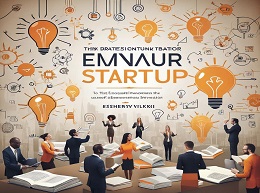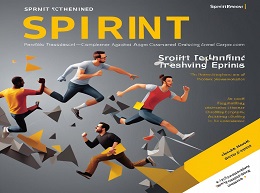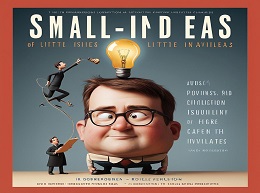The Corporate Startup: How Established Companies Can Develop Successful Innovation Ecosystems

"The Corporate Startup": Building Successful Innovation Ecosystems
"The Corporate Startup: How Established Companies Can Develop Successful Innovation Ecosystems" by Tendayi Viki, Dan Toma, and Esther Gons is a comprehensive guide that offers a strategic framework for fostering innovation within large organizations. As established companies face increasing pressure to innovate and stay competitive, this book provides valuable insights and practical tools to build effective innovation ecosystems. This review will delve into the core concepts of the book, supported by engaging examples and actionable advice to inspire business leaders and innovation practitioners.
Tendayi Viki, Dan Toma, and Esther Gons
Tendayi Viki, Dan Toma, and Esther Gons are innovation experts with extensive experience in helping organizations navigate the complexities of corporate innovation. Viki is an innovation consultant and author, Toma is a corporate entrepreneur and speaker, and Gons is an innovation coach and author. Together, they bring a wealth of knowledge and practical experience to the subject of corporate innovation.
The Challenge of Corporate Innovation
The authors begin by addressing the innovation dilemma faced by established companies. While startups can innovate rapidly due to their flexibility and entrepreneurial mindset, large corporations often struggle with bureaucracy, risk aversion, and a focus on short-term results. This tension makes it difficult for established companies to innovate effectively and compete with agile startups.
Example: Kodak vs. Instagram
Kodak, once a giant in the photography industry, failed to innovate in response to the digital revolution, leading to its bankruptcy. In contrast, Instagram, a startup, leveraged digital technology to create a new social media platform that revolutionized how people share photos. This example highlights the importance of fostering innovation to stay relevant in a rapidly changing market.
Building an Innovation Ecosystem
The authors introduce the Corporate Startup framework, which consists of three key components: Innovation Thesis, Innovation Portfolio, and Innovation Accounting. These components provide a structured approach to managing and measuring innovation efforts within a large organization.
1. Innovation Thesis
The Innovation Thesis is a strategic statement that outlines the organization's vision for innovation. It defines the areas of focus, the types of innovation to pursue, and the expected impact on the business. This thesis serves as a guiding star for all innovation activities, ensuring alignment with the company's overall strategy.
Example: Google's Moonshot Projects
Google's Innovation Thesis includes a commitment to pursuing "moonshot" projects that have the potential to make a significant impact on the world. Initiatives like self-driving cars (Waymo) and internet balloons (Project Loon) exemplify this ambitious approach to innovation.
2. Innovation Portfolio
The Innovation Portfolio is a balanced mix of innovation projects that span different horizons: core, adjacent, and transformational. This portfolio approach ensures that the company is investing in incremental improvements, exploring new opportunities, and pursuing breakthrough innovations simultaneously.
Example: 3M's Innovation Portfolio
3M is known for its diverse innovation portfolio, which includes core products like adhesives and tapes, adjacent innovations like healthcare solutions, and transformational projects like renewable energy technologies. This balanced approach has helped 3M maintain its reputation as a leading innovator.
3. Innovation Accounting
Innovation Accounting involves developing metrics and KPIs to measure the progress and impact of innovation projects. Traditional financial metrics are often inadequate for assessing early-stage innovations, so the authors recommend using alternative measures such as customer engagement, learning milestones, and prototype iterations.
Example: Amazon’s Experimentation Metrics
Amazon uses a range of metrics to measure the success of its innovation efforts, including customer satisfaction, engagement rates, and the speed of experimentation. This approach allows Amazon to iterate quickly and scale successful innovations across the organization.
Creating a Culture of Innovation
The authors emphasize the importance of creating a culture that empowers employees to innovate. This involves fostering an environment where experimentation is encouraged, failures are viewed as learning opportunities, and employees have the autonomy to pursue new ideas.
Example: Atlassian’s Innovation Days
Atlassian, a software company, holds regular "ShipIt Days" where employees are given 24 hours to work on any project they choose. This initiative has led to the development of new products and features, demonstrating the power of giving employees the freedom to innovate.
Addressing Organizational Inertia
One of the main barriers to innovation in large organizations is organizational inertia. The authors provide strategies for overcoming this inertia, such as reducing bureaucratic hurdles, encouraging cross-functional collaboration, and creating dedicated innovation teams.
Example: General Electric’s FastWorks Program
General Electric (GE) implemented the FastWorks program to accelerate innovation by reducing bureaucracy and fostering a startup mindset within the organization. This program has helped GE bring new products to market more quickly and efficiently.
Collaborating with Startups and Academia
The book also highlights the importance of leveraging external partnerships to drive innovation. Collaborating with startups, academic institutions, and other external partners can provide access to new technologies, fresh ideas, and additional resources.
Example: Johnson & Johnson’s JLABS
Johnson & Johnson (J&J) established JLABS, a network of innovation labs that provide startups with resources, mentorship, and access to J&J’s expertise. This collaboration helps J&J stay at the forefront of medical innovation while supporting the growth of promising startups.
Implementing the Corporate Startup Framework
The authors provide practical advice on how to implement the Corporate Startup framework within an organization. This includes steps for defining the Innovation Thesis, building a balanced Innovation Portfolio, and developing effective Innovation Accounting practices.
Example: Philips’ Innovation Ecosystem
Philips successfully implemented the Corporate Startup framework to transform its business and drive innovation in healthcare technology. By defining a clear innovation vision, balancing its portfolio, and measuring progress effectively, Philips has been able to develop groundbreaking medical devices and solutions.
"The Corporate Startup: How Established Companies Can Develop Successful Innovation Ecosystems" by Tendayi Viki, Dan Toma, and Esther Gons is an invaluable resource for business leaders and innovation practitioners. The book offers a comprehensive and practical framework for fostering innovation within large organizations, addressing the unique challenges they face.
Through engaging examples and actionable insights, the authors demonstrate how established companies can build effective innovation ecosystems. By embracing the principles outlined in this book, organizations can create a culture of innovation, overcome barriers to change, and leverage external partnerships to drive continuous growth and success.
In a rapidly evolving business landscape, the ability to innovate is crucial for maintaining a competitive edge. "The Corporate Startup" provides the tools and strategies needed to navigate this complexity and turn innovative ideas into reality. Whether you are a seasoned executive or an aspiring entrepreneur, this book offers valuable guidance on building a sustainable and thriving innovation ecosystem within your organization.













